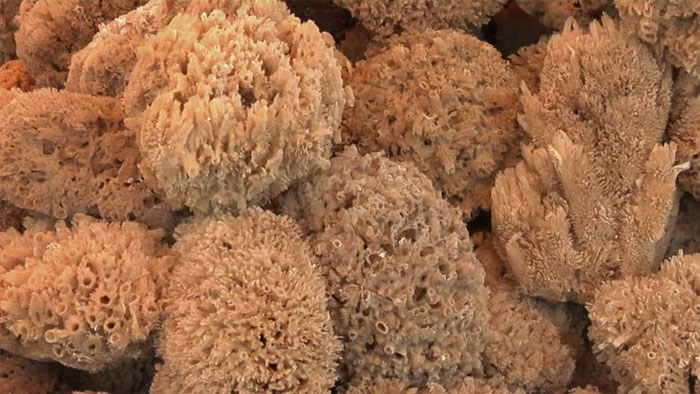Animals appear first on Earth
Sponges are present on Earth 100 million years earlier than today's animals.
In the latest genetic analysis, Massachusetts Institute of Technology (MIT) researchers found sponge molecules in 640 million-year-old rocks. They are much older than the Cambrian period, the period when most animal groups appeared (540 million years ago). This indicates that the sponge may be the first animal to live on Earth.
"We collect paleontological and genetic evidence to prove the molecular fossil of sponges is one of the oldest traces of animal life , " said David Gold, graduate student researcher. Professor at MIT's Department of Earth, Atmospheric and Planetary Science (EAPS) said.
The research results are published in the Proceedings of the US National Academy of Sciences on February 22.
Paleontologists have excavated a large amount of fossils since 540 million years ago. Based on fossil data, some scientists argue that contemporary animal groups have experienced an explosion in quantity on Earth. They rapidly change from unicellular organisms to complex multicellular animals in relatively short geological stages.

The sponge may have appeared on Earth from 640 million years ago, much earlier than any other animal.(Photo: Youtube).
However, fossils known before the explosion in the Cambrian period have many unusual aspects, making it difficult to identify the first animal in the evolutionary stream. The Summons laboratory aims to find answers in molecular fossils, traces of animal molecules remaining in ancient rocks.
"We think animals must appear long before the Cambrian period, because many animals appear at this time, but previous animal fossil evidence is controversial , " Gold said. "Researching residual biochemical and molecular traces can help solve the debate."
Specifically, Gold and his colleagues focused on 24-isopropylcholestane molecule, or 24-ipc for short . This is a lipid molecule , or sterol , a modified form of cholesterol . Gold's team identified genes responsible for 24-ipc coding, then searched for organisms that carry the gene, and eventually tracked the evolution of this gene in the organism.
The team observed the genome of about 30 different organisms, including plants, fungi, algae, and sponges, to determine each sterol that each organism produces and identify the genes involved.
By comparing the genome, they identified the only gene named sterol methyltransferase (SMT) responsible for producing some types of sterols. The researchers discovered sponges and algae that had added a SMT copy when compared to close species.
The researchers compared these copies to understand the relationship and when the first copy appeared. They then mapped the evolutionary relationships and used fossil evidence to determine the timing of the duplication of SMT genes.
Gold's group found the sponge formed copies of the SMT gene much earlier than algae . This happened about 640 million years ago, at the same time the 24-ipc trace was found in the stone samples. Research results are important evidence that sponges appear on Earth from 640 million years ago, much earlier than any other animal.
- Recreate the 3-dimensional structure of the oldest animals on earth
- See Earth's 'prophetic' animals endangered
- People are Earth's greatest enemies?
- 'Great extinction' used to happen on Earth
- Aquatic animals increase the earth's temperature
- The earth is hot, the animals are small
- One-fifth of animals are at risk of extinction
- Life animals 10,000 years, though
- Animals are about to disappear on Earth
- Earth has 1 trillion species of living organisms, 99,999% unexplored and classified
- 13 species of miraculous ancient mammals
- The largest class of animals in the Earth is seriously degraded
 Animal 'suffering' after hibernation
Animal 'suffering' after hibernation Why do goats climb well?
Why do goats climb well? Scientists were surprised to see chimpanzees eating turtles
Scientists were surprised to see chimpanzees eating turtles Giant catfish died deadly due to drought in Thailand
Giant catfish died deadly due to drought in Thailand